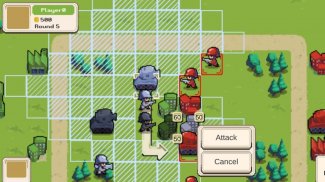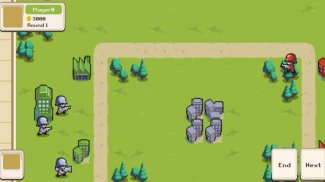





Wars Advance

Descriere Wars Advance
The battles of Advance Wars are turn-based. Two to four armies, each headed by a commanding officer, take turns building and commanding units on grid-based maps, while attacking enemy units, moving positions, holding ground, or capturing enemy/neutral properties (cities, ports, airports, bases, or HQ).[1]
Screenshot of Advance Wars
All units are limited in the types of units they can attack.[1] What dictates a unit's ability to attack different targets are its primary and secondary weapons. For example, the Mech unit has a bazooka that can only be fired at land vehicles, but are more powerful for that purpose than their secondary weapons, machine guns, which Mechs can use against other Mechs, Infantry, and helicopters.
Units that can attack, do so either directly (can attack adjacent to another unit where standing or moved, but be counter-attacked by the enemy unit), or in-directly (must remain still to attack, and have an enemy in firing range). The amount of damage done by a unit to an enemy unit in combat, comes down to a number of factors: the number of hit points the attacker has, whether they can use their main weapon (if not, they either cannot, or will use their secondary weapon instead), the type of unit the attacker and the defender are, and the terrain the enemy unit is on; by contrast, if the enemy unit is directly attacked, the same factors determine the damage done when they counter-attack the attacking unit. The majority of units have main weapons with a limited supply of ammunition, with the amount of ammo depending on the type of unit. Units with secondary weapons will resort to these when their primary weapon's ammunition runs out until they are resupplied.

























